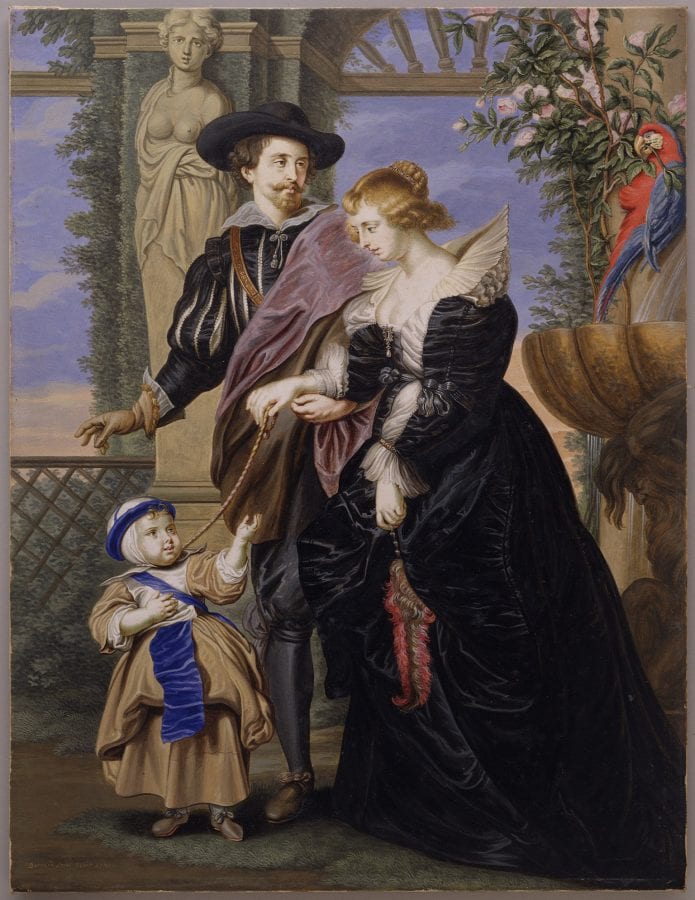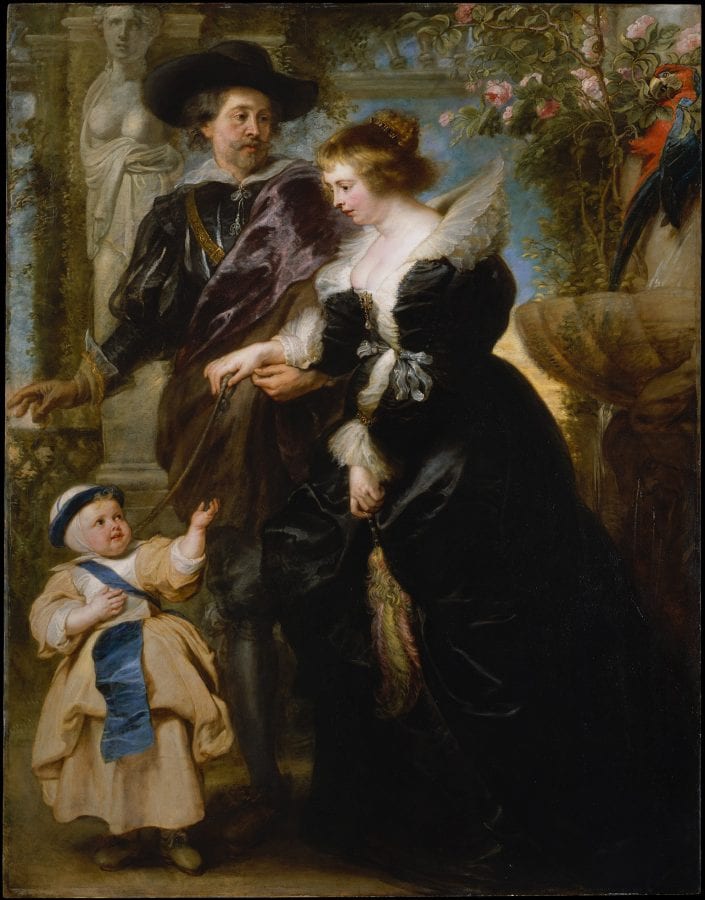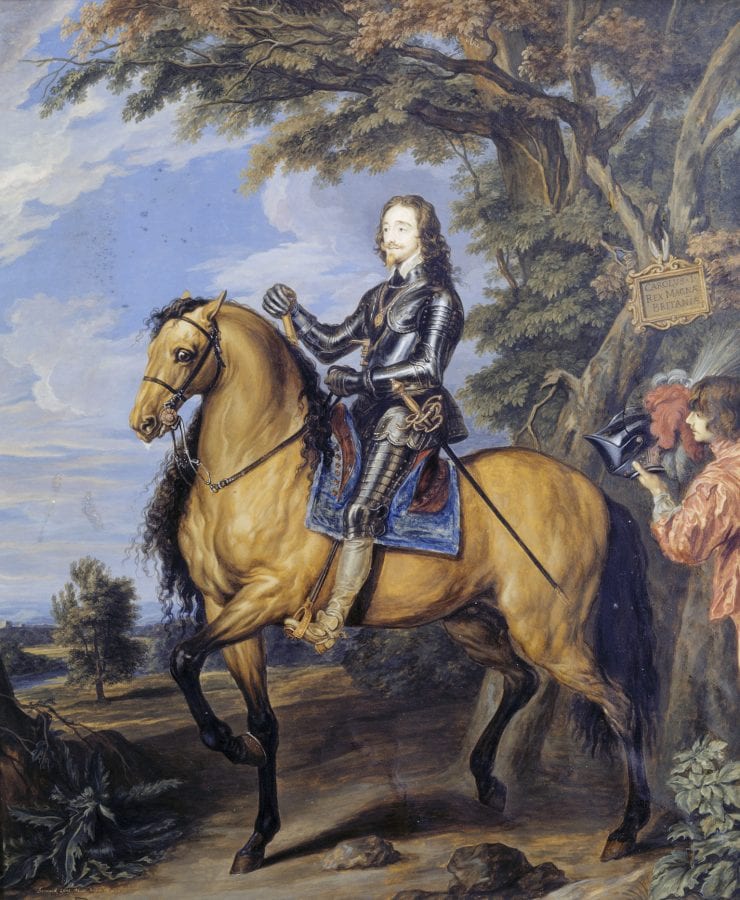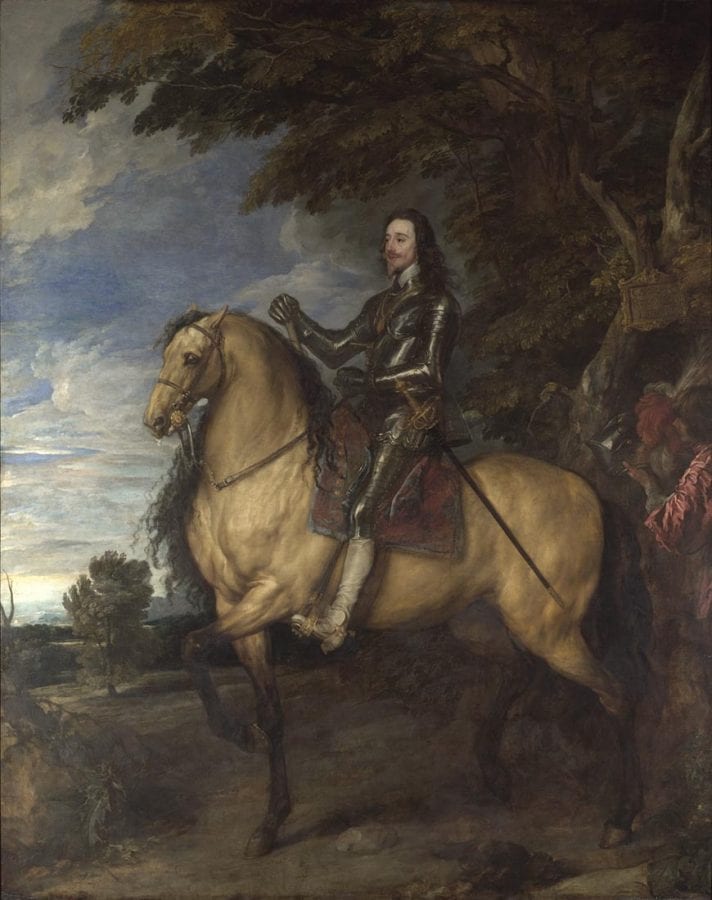Using Bernard Lens III’s small-scale gouache on vellum copy after Rubens, His Wife Helena Fourment, and Their Son Frans as a point of departure (both original and copy are in the collection of the Metropolitan Museum of Art in New York), the present article examines the English tradition of small-scale copies and the particular collecting habits of the eighteenth-century owners of Rubens’s painting, John and Sarah Jenyns Churchill, first Duke and Duchess of Marlborough. The Marlboroughs, like other prominent collectors of the era, commissioned Lens to paint miniature copies after (mostly Flemish) paintings in their collection, as well as several miniature portraits of family members. The article suggests possible motivations for these commissions and for the selection of particular works for copying.
It is difficult to identify an object in the collections of the Metropolitan Museum of Art with connections to Dutch or Flemish painting that managed to escape Walter Liedtke’s keen eye, meticulous scholarship, and sly wit. Yet there is one among the lesser-known works in the European Paintings Department: a large and colorful miniature copy on vellum of Rubens, His Wife Helena Fourment, and Their Son Frans, painted in 1721 by Bernard Lens III (1682–1740) (fig. 1).1 Acquired by the museum primarily for its documentary relationship to the original (and a few years after the publication of Liedtke’s Flemish Paintings in the Metropolitan Museum of Art), Lens’s miniature hardly achieves the voluptuousness and deftness of touch that characterize Rubens’s masterwork of the late 1630s (fig. 2). Yet its clear colors and graphic fidelity are useful for elucidating details in the oil painting that have become less evident over time, and its mere existence provokes questions about how and why such a work was created. In 1986, prompted by a small-scale copy of a Rubens painting that had recently been acquired by the Yale Center for British Art, Ann-Marie Logan presented a wealth of information on Lens’s miniature copies after Rubens and Anthony van Dyck (including the present work).2 The present essay expands upon those findings to consider Lens’s copy of Rubens, His Wife Helena Fourment, and Their Son Frans in the context of the English tradition of small-scale copies and the collecting habits of the eighteenth-century owners of Rubens’s painting, John and Sarah Jenyns Churchill, first Duke and Duchess of Marlborough, who also commissioned the copy.
John Churchill (1650–1722) achieved swift military and political advancement in service to James, Duke of York, and was instrumental in bringing him to the throne as James II of England in 1685. Churchill soon switched allegiance to the Protestant Prince William of Orange, and shortly after William’s accession to the throne (as William III) in 1688, was created Earl of Marlborough. In 1701, Marlborough was appointed commander-in-chief of the English army in Holland and led the allied forces against France in the War of the Spanish Succession. A string of spectacular victories—at Blenheim, Ramilles, Oudenaerde, and elsewhere—sealed Marlborough’s renown. Under the patronage of Queen Anne, whose most intimate friend and Mistress of the Robes was Churchill’s wife, Sarah Jenyns (1660–1744), the Marlboroughs’ fortune, power, and influence rose astronomically. The queen made Marlborough a duke and granted him the manor of Woodstock as reward for his victory at Blenheim. Parliament approved substantial funds toward the creation of a home suitable for a national hero: Blenheim Palace. Construction on the vast palace, designed by Sir John Vanbrugh and completed by Nicolas Hawksmoor, was hampered by a variety of factors and was only completed in the 1730s, more than a decade after the duke’s death. Yet throughout the long years of building works, the Marlboroughs’ correspondence demonstrates that they both took keen interest in furnishing the house and buying or commissioning art to fill it. The duke in particular took advantage of his military duties on the Continent to order tapestries and acquire paintings he especially admired: “I am so fond of some pictures I shall bring with me, that I could wish you had a place for them until the Gallery at Woodstock be finished; for it is certain there are not in England so fine pictures as some of these, particularly the King Charles on horseback, done by Vandyke.”3 The Marlboroughs were especially drawn to the work of Peter Paul Rubens and eventually owned at least twenty paintings by or attributed to him. A taste for Old Masters did not cause them to neglect contemporary English artists, and they also commissioned works from (among others) Godfrey Kneller, John Closterman, Grinling Gibbons, the French-born Louis Laguerre, James Thornhill, and Michael Rysbrack.
Another English artist patronized by the duke and duchess was the peripatetic miniature painter and copyist Bernard Lens III. Lens was the son of Bernard Lens II (1659/60–1725), draftsman and drawing master at Christ’s Hospital, London.4 The younger Lens was also a prolific draftsman (the works of father and son are often confused) and drawing master who counted among his pupils Horace Walpole, three children of King George II (William Augustus, Mary, and Louisa), and John Spencer, grandson of the first Duke of Marlborough.5 In 1720 Lens was appointed “Painter in Enamell [sic] in Ordinary” to King George I (an unsalaried position, according to George Vertue), and after the king’s death in 1727 served his successor George II in the same capacity. This official title was somewhat of a misnomer, as Lens never worked in enamel: Vertue notes that his predecessor in the post, Charles Boit (1662–1727), had caused the honorary designation to be changed from “Limner” to “Enameller” to reflect his own talents, and the title was simply transferred to Lens. It is as a painter of miniatures that Lens is best remembered: his earliest dated portrait miniature (Portrait of Dr. Harris, 1707; New Haven, Yale Center for British Art, inv. B1974.2.66) is the first dated miniature to be painted in Britain on ivory, rather than the traditional support of vellum. Lens continued to paint original likenesses throughout his career, but he also had a thriving business limning copies of historic miniatures and miniature copies on paper or vellum of oil paintings by both Old Masters and contemporary artists.
The small-scale reproduction of oil paintings through the medium of watercolor and gouache on vellum (often called “cabinet miniatures”) had a respected history in Britain: producing copies was one of the traditional purposes of the office of king’s limner.6 Isaac Oliver (1560/5–1617) was perhaps the first English artist to paint religious and historical cabinet miniatures for the royal family; later in the seventeenth century, Richard Gibson, David Des Granges, and Nicholas Dixon all painted subject pieces alongside more traditional portrait miniatures. Between 1628 and the late 1630s, Isaac’s son Peter Oliver (ca. 1689–1647) made at least ten miniature copies for King Charles I of some of the most highly valued paintings in his collection.7 The enormous amount of time and effort involved in making these detailed copies made them immensely costly, and artists often maximized their investment by making a second version to keep for themselves or to sell to another patron.8 By the early eighteenth century the production of small-scale copies after oil paintings had become a veritable industry, and while they were still expensive, they were no longer the sole preserve of royalty.
A number of Bernard Lens’s copies reproduce historic sixteenth- and seventeenth-century portrait miniatures, including a series of likenesses of kings and queens of England, many of which survive in multiple examples.9 These tend to be somewhat crudely executed and were probably made for sale on the open market. Lens also painted miniature likenesses of writers, philosophers, and artists—among the latter, Rubens, Raphael, and van Dyck were honored alongside home-grown talents such as Samuel Cooper, William Dobson, and John Greenhill—copied either from older miniatures or from full-sized paintings. Catering to a slightly more sophisticated taste, these are perhaps more likely to have been done on commission.10 The finest of Lens’s copies, however—and what he was best known for in his lifetime—were his reproductions of large-scale oil paintings. Contemporaries like Horace Walpole especially praised his ability to capture the vivid colors of the original oil paintings in these small watercolors on vellum or paper.11 Lens’s copies tend to be quite accurate and demonstrate a keen awareness of the strengths and limitations of his chosen medium. While the inherent properties of oil paint allowed for softly blended and suggestive passages, gouache required Lens to either greatly simplify these areas of the composition (for example, in backgrounds) or describe them in precise detail (such as foreground foliage). He occasionally added touches of gold for highlights and/or his signature or monogram.
Lens’s most serious rival in this field was the Catholic artist Joseph Goupy (1689–1769), who painted copies after predominantly Italian artists (Raphael, Salvator Rosa, Poussin, Titian, Luca Giordano, van Dyck, etc.) for his aristocratic patrons. In 1736 Goupy was named Cabinet Painter to Frederick, Prince of Wales.12 While Goupy made his career copying Italian masters almost exclusively, Lens divided his time between painting portraits from life and painting cabinet miniatures reproducing works by mostly Flemish artists.
Logan identified five cabinet miniatures by Lens after paintings by Rubens and van Dyck, including the copy of Rubens, His Wife Helena Fourment, and Their Son Frans now in the Metropolitan Museum.13 Several more works can be added to this core group. While the resulting list is surely far from complete, it does give a better perspective on Lens’s activities in this area. Several of Lens’s cabinet miniatures can be connected with the Duke and Duchess of Marlborough, who were without doubt his most important patrons. He also made works for other prestigious collectors, such as Robert Harley, later first Earl of Oxford and his son Edward, later second Earl of Oxford (1689–1741); John Hervey, first Earl of Bristol (1665–1751); and possibly James Brydges, first Duke of Chandos (1673–1744). Lens offered his clients a variety of services: original miniature likenesses on ivory and cabinet miniatures reproducing larger works, as well as drawing lessons and advice on framing.14 Edward Harley (a noted collector of books, manuscripts, coins, medals, and miniatures) had received drawing lessons from Lens’s father (Bernard II) beginning in 1707. This connection paved the way for the younger Lens to undertake a number of commissions for Harley between 1714 and 1728, including miniature copies of family portraits by Kneller and Michael Dahl, a portrait of Matthew Prior on vellum “after a French pictor,” and a detailed copy of Livinius de Vogelaar’s Memorial of Lord Darnley, then in the collection of Thomas Fermor, first Earl of Pomfret.15 For John Hervey, Lens painted eight miniature copies of portraits (all of artists, with the exception of a likeness of Isaac Newton) and a copy after a Madonna and Child at Kensington Palace, then thought to be by Raphael.16 In 1710 Lens painted a cabinet miniature reproducing Poussin’s Choice of Hercules, a painting then owned by the Duke of Chandos, but whether that miniature was commissioned by Chandos himself is not known.17
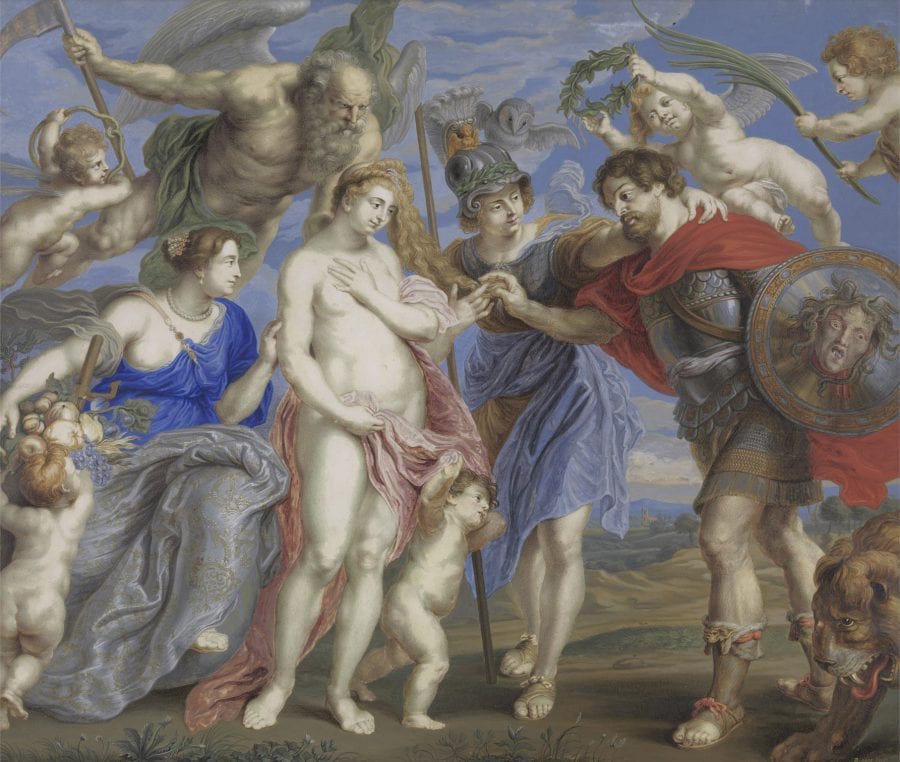
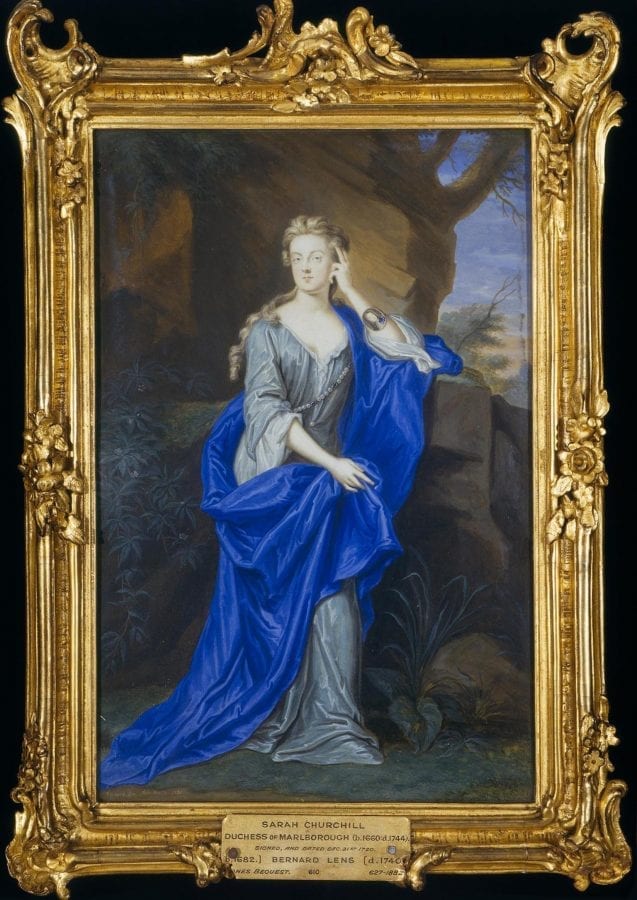
Dated works by Lens for the Duke and Duchess of Marlborough indicate that he worked most actively for them between 1720 and 1722, although he may have painted miniature portraits of the family earlier and certainly continued his connection with them after.18 In 1720, Lens made the first of his cabinet miniatures after seventeenth-century Flemish paintings for the Marlboroughs: The Victorious Hero Takes Occasion to Conclude Peace (fig. 3), after a painting by Rubens now known via a workshop version at Siegen;19 and King Charles I on Horseback, after the original by van Dyck now in the National Gallery, London (fig. 4, fig. 5). The miniatures are precisely dated: July 21, 1720, and August 12, 1720, respectively, suggesting, perhaps, that the artist took up a summer residency at Blenheim in order to copy the paintings. He also made several likenesses of family members, ranging from small (original) oval likenesses in watercolor on ivory20 to larger cabinet miniatures reproducing full-sized oil paintings: portraits of Sarah Churchill, Duchess of Marlborough (fig. 6), and of her daughter Anne, Countess of Sunderland, with her son, both after Kneller.21 More unusual are “hybrid” portraits of family members, which reworked compositions by van Dyck to accommodate modern likenesses: a portrait of the Countess of Sunderland’s three youngest children, based on van Dyck’s Portrait of the Three Eldest Children of Charles I;22 and an adaptation of van Dyck’s Portrait of Charles I that substitutes the head of the Duke of Marlborough for that of the monarch.23 The miniature equestrian portrait of the Duke, as well as that of his wife after Kneller, are again precisely dated: November 12, 1720, and December 31, 1720, respectively, and an inscription on the latter indicates that it was done in London. Both also note that they were done “ad vivum”—presumably in the presence of the subjects themselves (and not necessarily the original paintings) during their winter residence in town.
In 1721 Lens painted a further two copies after Flemish paintings in the Marlborough collection: the Rubens, His Wife Helena Fourment, and Their Son Frans and a copy of a Madonna and Child by van Dyck, which again is precisely annotated “from the original by Sir Anthony Van Dyck / and with the leave of the Duke of Marlborough at Blenheim Castle near Woodstock in Oxfordshire June 6th 1721.”24 In the same year Lens painted a copy after Paolo Veronese’s Dream of Saint Helena, which was then probably in the collection of the Duke’s son-in-law, Francis, second Earl of Godolphin.25 The last dated cabinet miniature Lens produced for the Marlboroughs was painted in 1722, the year of the duke’s death. On January 19, the Duchess of Marlborough purchased a version of Rubens’s Roman Charity at the sale of the Duke of Portland’s collection for the substantial amount of 500 guineas (£525); Lens’s copy of the work is dated March 28, 1722.26 There are at least two further miniature copies by Lens after Flemish paintings in the Marlborough collection, for which no dates have been recorded: The Three Graces, after a version of the painting by Rubens in the Museo del Prado, Madrid; and Time Clipping Cupid’s Wings, after the original by van Dyck now in the Musée Jacquemart-André, Paris. In the 1720s Vertue described the original painting by van Dyck as hanging “at Marlborough house” (the London residence of the Duchess of Marlborough) and noted “this picture is copyd by Mr Lens.”27
The Marlboroughs’ decision to commission Lens to paint small-scale copies of certain key paintings in their collection may have been inspired by a group of works already in their possession: namely 126 of David Teniers the Younger’s small copies (pasticci) of Italian paintings from the collection of the Hapsburg Archduke Leopold Wilhelm. These had been made in the mid-1650s as modelli for engraved illustrations in the magnificent catalogue of the archduke’s collection, the Theatrum Pictorium, published in 1660.28 It is not clear when or where Marlborough acquired Teniers’s copies; he visited Brussels on several occasions between 1706 and 1708 and is known to have arranged to have a number of paintings (including the Rubens, His Wife Helena Fourment, and Their Son Frans) “donated” to him on these visits, in recognition of his military service in the Southern Netherlands. It is possible that Teniers’s copies may have been part of such a gift, culled from one of the local residences of the former Spanish Hapsburg governors.29 The paintings are first recorded in the Marlborough collection in 1728;30 the 1740 inventory of furnishings at Blenheim Palace dictated by Sarah, Duchess of Marlborough, describes them as hanging in the Long Closet (a small room adjacent to her dressing room): “Lesser Pictures of different Sizes One hundred and twenty Six all of Great Masters and Gold Frames. There is a Printed Book which tells who are the Masters that Painted all these pictures.”31 Interestingly, while the Duchess (who was admittedly quite elderly and dictating from memory) failed to mention the maker of these paintings, she took care to emphasize that they documented a collection of works by “Great Masters.” It is conceivable that Teniers’s painted copies, and the lavish publication which resulted, may have given the Marlboroughs the idea of creating an illustrated record of their own rapidly expanding collection, comparable to that produced by Teniers for the Archduke.32
The Marlboroughs’ collection was, crucially, not an inherited collection but one which they themselves had assembled, an ambitious endeavor only made possible by the duke’s military and diplomatic successes and the duchess’s clever exploitation of her role as the queen’s close friend and confidante. Many of the paintings copied by Lens had been acquired by the duke on the Continent during the period of his greatest military and diplomatic successes, some by purchase, but others given (willingly or unwillingly) by local governments as tribute to the heroic commander.33 Others had similarly prestigious provenances.34 Reproducing them in miniature was a way of enhancing their significance and that of their owners. The specific choice of medium—gouache or watercolor on vellum—was typically and traditionally English, giving them a distinctive appearance quite different from Teniers’s copies, or indeed from the original oil paintings. The seventeenth-century miniature painter and theorist Edward Norgate spoke of Peter Oliver’s small-scale copies after Titian (painted, like Lens’s copies, in watercolor or gouache on vellum) as having the originals “translated into English Lymning.”35 Although there is no way of knowing whether the Marlboroughs would have made the same association, it is tempting to consider the copies as a way of imposing a nationalistic stamp on paintings gathered from other countries.
While the original paintings by Rubens and van Dyck and their approximate locations within Blenheim Palace are regularly mentioned in inventories and visitors’ accounts, there is little contemporary information on where Lens’s small-scale copies might have been displayed—whether at Blenheim or one of the Marlboroughs’ other properties—and no information on why they were commissioned, or by whom. Typically, miniatures and small paintings were kept in rooms designed for intimate viewing, such as private cabinets or dressing rooms, and often in chambers belonging to women: Teniers’s pasticci were displayed in a room adjacent to the Duchess of Marlborough’s dressing room, and it is conceivable that Lens’s copies were kept there as well. In describing the work of one of Lens’s pupils, Catherine da Costa, Vertue noted “all the remarkables [sic] pictures of Fame in England painted by Rubens Vandyke & other masters, which Mr. Lens her instructor had coppyd, furnishes a Room . . . which makes a very grand Collection. for a Ladys Cabinet.”36 In 1749 Vertue recorded a number of cabinet miniatures made by Joseph Goupy after works by Titian, Guido Reni, Raphael, and others for Frederick, Prince of Wales, as hanging in Princess Augusta’s dressing room at Leicester House.37 It is equally possible that Lens’s cabinet miniatures were kept at one of the Marlboroughs’ other, smaller properties, as mementos of the large originals at Blenheim Palace. The only one of Lens’s works specifically mentioned by the duchess is the portrait of the duke based on van Dyck’s Portrait of Charles I on Horseback, which was described in the codicil to her will (1744) as being then at Windsor Lodge, the duchess’s residence in Windsor Great Park.38
This consideration of one small painting in the collection of the Metropolitan Museum has perhaps raised more questions than it has answered. A further search of documents in the Blenheim archives may turn up additional information concerning the Marlboroughs’ commissioning of works from Bernard Lens during the 1720s, although that seems unlikely. It is far more certain that cabinet miniatures by Lens reproducing works by Rubens, van Dyck, and other Old Masters will continue to resurface in public and private collections and at auction. Coupled with Lens’s habit of providing his miniatures with extensive inscriptions and precise dates, this may one day enable the story of Lens’s copy after Rubens’s magnificent portrait Rubens, His Wife Helena, and Their Son Frans to be told with a command of detail worthy of Walter’s memory.

